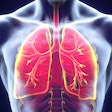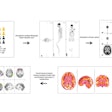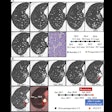Centrally located lung cancer is a poor prognostic factor independent of nodal status, and identifying it could determine how patients are tracked after undergoing surgery to remove tumors, researchers have reported.
"[We found that] in patients with resected lung cancer, central location -- defined as location of the tumor center within the lung's inner one-third -- was independently associated with increased risk of locoregional recurrence and poorer recurrence-free survival and overall survival," said study senior and corresponding author Sang Min Lee, MD, of the University of Ulsan College of Medicine in South Korea, in a statement released by the American Journal of Roentgenology. The journal published Lee's and colleagues' findings on August 27.
In patients with lung cancer, central location of the tumor is considered a risk factor for mediastinal lymph node metastasis, the group wrote. But the definition of "central" is unclear, it noted.
"Current guidelines recommend invasive evaluation of mediastinal lymph nodes during staging workup for central lung cancer," the team wrote. "However, the definition of 'central' varies across guidelines, with some defining central tumors as those located within the lung's inner one-third and others as those within the inner two-thirds. Although studies have explored the optimal definition of central location of lung cancer, consensus is lacking regarding the portion of the long that should be considered central … the dividing lines between thirds, and the tumor's reference point … relative to such dividing lines, making these definitions difficult to reproduce."
To attempt to clarify the definition of central lung cancer, Lee and colleagues conducted a study that included 1,796 patients who underwent lobectomy or pneumonectomy for invasive lung adenocarcinoma between July 2010 and December 2019. They developed an automated algorithm that generated segmentation masks on CT, dividing the lungs into three concentric regions (the lung's inner, middle, or outer third based on two reference points: tumor center and tumor medial margin).
The investigators classified tumor location as central versus peripheral according to four definitions:
- Center within inner one-third (8.2% of patient cohort)
- Center within inner two-thirds (51% of patient cohort)
- Medial margin within inner one-third (29% of patient cohort)
- Medial margin within inner two-thirds (79.4% of patient cohort)
They then assessed any links between central location and locoregional and distant recurrences, recurrence-free survival, and overall survival.
Overall, the researchers found that, in patients with resected lung cancer, central location was independently associated with increased risk of locoregional recurrence and poorer recurrence-free survival and overall survival.
Association of hazard risk between central location of lung adenocarcinoma and patient outcomes | |
Outcomes | Hazard ratio (with 1 as reference) |
| Higher locoregional recurrence (definition 1 and 3) | 1.75 |
| Worse recurrence-free survival (definition 1 and 3) | 1.52 |
| Worse overall survival (definition 1) | 1.45 |
 (A) Definition 1 (inner one-third, tumor center–based): assigned when tumor center (red dot on yellow tumor) lies within inner one-third of lung (white dot-bordered blue area). (B) Definition 2 (inner two-thirds, tumor center–based): assigned when tumor center lies within either inner or middle third (white dot-bordered blue or green area). (C) Definition 3 (inner one-third, tumor medial margin–based): assigned when tumor’s medial margin falls within inner one-third (white dot-bordered blue area). (D) Definition 4 (inner two-thirds, tumor medial margin–based): assigned when medial margin falls within either inner or middle third (white dot-bordered blue or green area). Image and caption courtesy of the ARRS.
(A) Definition 1 (inner one-third, tumor center–based): assigned when tumor center (red dot on yellow tumor) lies within inner one-third of lung (white dot-bordered blue area). (B) Definition 2 (inner two-thirds, tumor center–based): assigned when tumor center lies within either inner or middle third (white dot-bordered blue or green area). (C) Definition 3 (inner one-third, tumor medial margin–based): assigned when tumor’s medial margin falls within inner one-third (white dot-bordered blue area). (D) Definition 4 (inner two-thirds, tumor medial margin–based): assigned when medial margin falls within either inner or middle third (white dot-bordered blue or green area). Image and caption courtesy of the ARRS.
"Patients with centrally located lung cancers may warrant closer postoperative surveillance," Lee's group concluded.
The complete study can be found here.





















